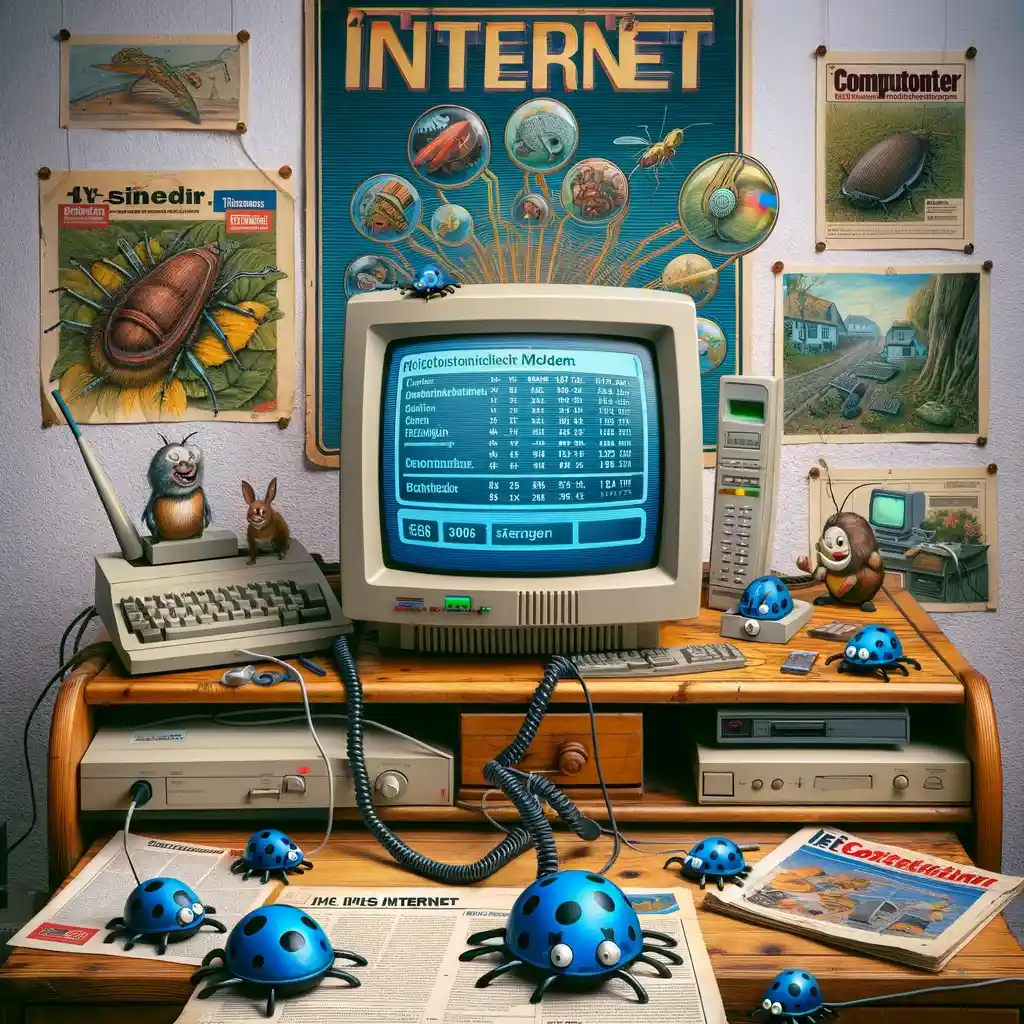The last echo of a 56k modem: farewell in the midst of industrial noise
Hello Bugbusters! Yesterday, amidst the constant roar of pumps and burners in an industrial boiler room, I decommissioned the last 56k modem that had served faithfully for 18 years. I spent many hours there, sometimes frantically troubleshooting, but always with a sense of satisfaction when the repairs were finally successful. The modem was more than just a machine - it was a part of my daily work that brought a little joy with every successful dial-up tone.
This era ended with a quiet click - the beeping and crackling that once marked the start of the digital adventure fell silent.
So I thought: let's talk about this technology again before it disappears into the history of technology. Don't worry, IT geeks will also get their money's worth.
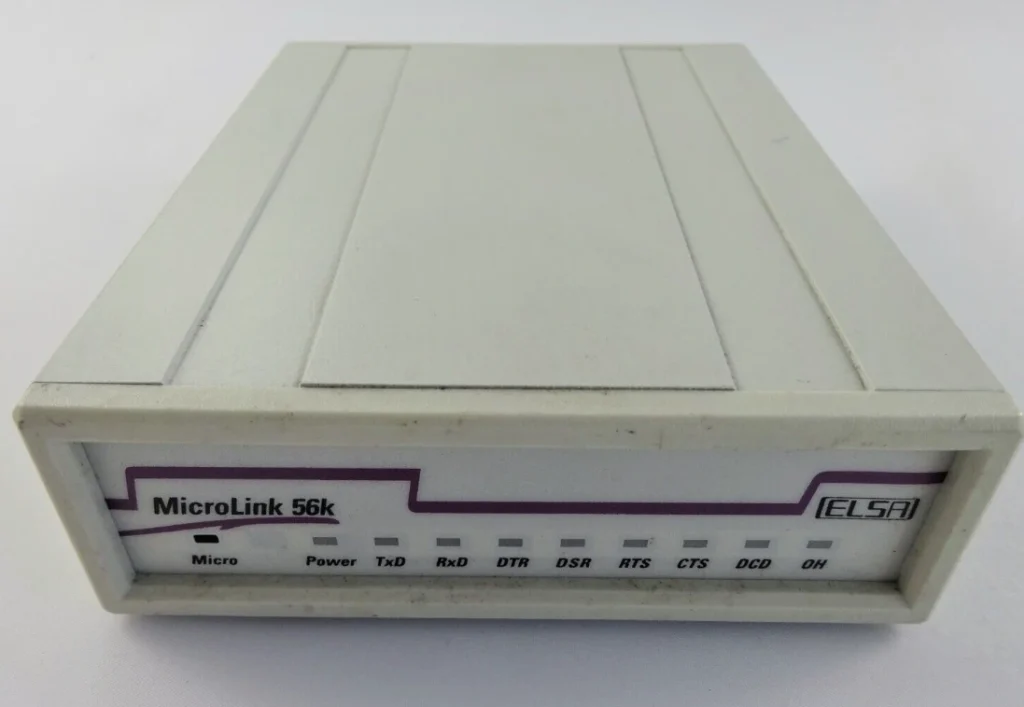
The golden days of dial-up: A time when patience was a virtue
First, let's look at the relic of our digital ancestors: the 56k modem. At a time when broadband internet was a fleeting dream of the future, these modems ruled the phone lines and were the gateway to cyberspace. Anyone who experienced the dial-up connection remembers the symphonic cacophony that hit the ear as soon as the connection to the network was established. It was a ritual - the call to the digital world, a digital handshake with the Internet.
These sounds were music to the ears of technology enthusiasts at the time, as they signified a successful connection. But they also had a practical function: they were an audible feedback of the communication between modem and server.
However, in order for this data to get from the modem to the server, a partner was still required: RS-232 - the serial connection - or, as most people know it, the COM port - that strange connection that every computer used to have integrated.
Some technicians still get a chill down their spine when I say: Baud rate, data bit, parity, stop bit - nothing to do with plug & play.
But let's go back to the 56k modem - we can make our own blog about serial connections.
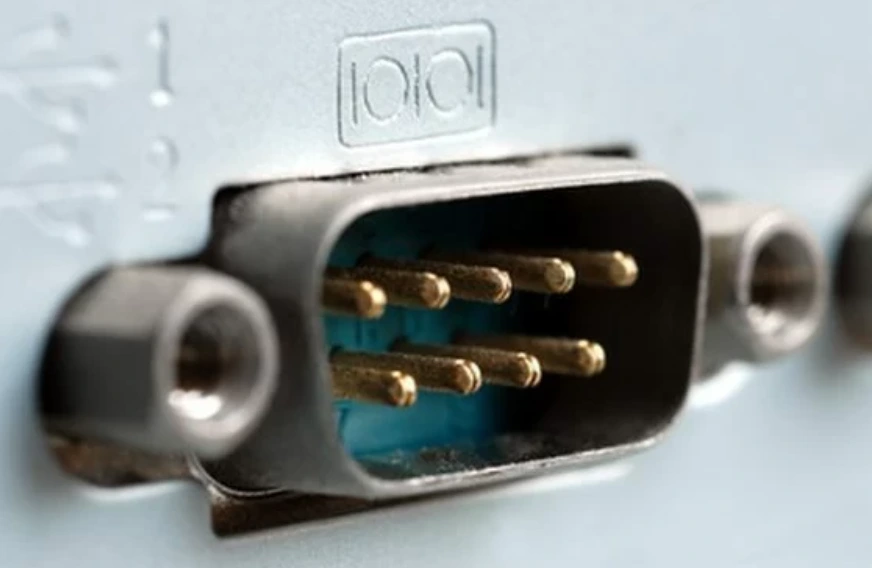
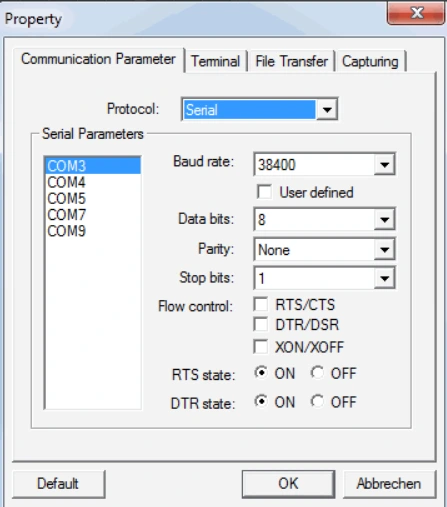
The dial-in: A technical squeak on the telephone line
Let's think of the dial-up connection not just as simple dialing, but as a careful sequence of technical handshakes. The 56k modem used the existing telephone infrastructure to build a bridge between the end user and the Internet Service Provider (ISP). When establishing a dial-up connection, the modem went through several phases, each signaled by specific tones and differentiated by the heart (Hz).
Phase 1 - Handshake process: First, the modem initiated the connection by transmitting a standard dial tone, followed by the dialing sequence. As soon as the call arrived at the ISP, an acoustic handshake began in which two modems exchanged their capabilities and agreed on a common communication standard.
Phase 2 - Carrier detection: After the handshake, the modem began transmitting a carrier tone that signaled a stable connection. This tone was an indicator that the modem on the other side was ready to receive and send data.
Phase 3 - Modulation and demodulation: At their core, 56k modems worked with modulation and demodulation technology. They converted digital computer data into analog tones, which were transmitted via telephone lines and then converted back into digital signals. This conversion was necessary because the original telephone lines were designed for the human voice, i.e. analog signals.
Here is a nice picture, which visually represents a dial-in, from Oona Räisänen
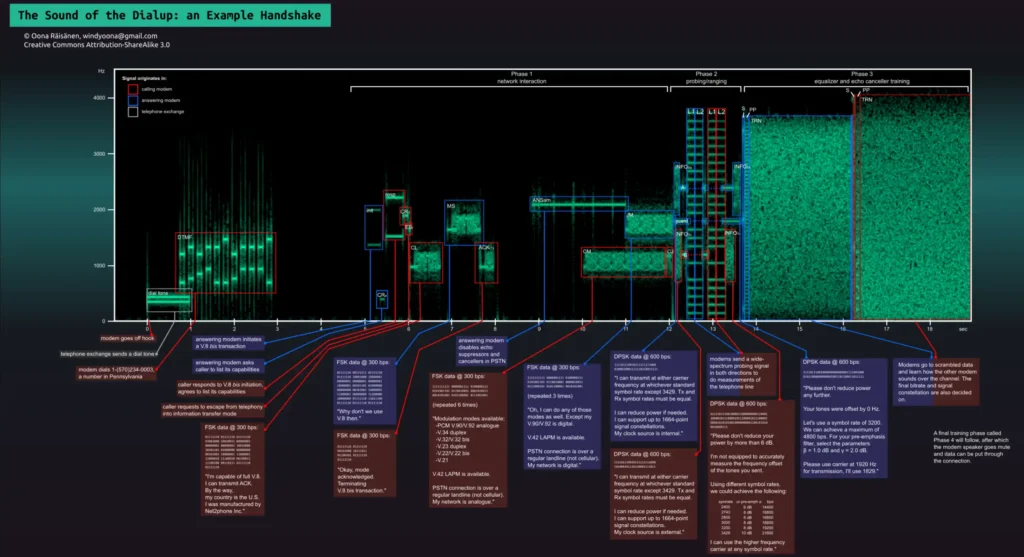
The rhythm of progress: a symphony of speed
The 56k modem represented the pinnacle of modem technology before the broadband era and used complex modulation techniques to maximize the bandwidth limitations of telephone lines. It used a technique called Pulse Code Modulation (PCM), which allowed analog signals to be converted into digital information. This technique was crucial to achieving the impressive speeds of up to 56 Kbit/s at the time.
While previous generations of modems relied on slower standards such as V.32 and V.34, which achieved maximum speeds of 33.6 Kbit/s, the V.90 protocol - and later the improved V.92 - offered users unprecedented transmission efficiency. These protocols optimized the data transmission rate through improved error correction procedures and data compression techniques in order to utilize the maximum capacity of the telephone lines.
Through the artful interplay of hardware and software, dial-up with a 56k modem became a masterpiece of technical achievement - a symphony of speed that made it possible to transmit information almost at the speed of light, at least by the standards of the time.
These technical details of the 56k modem reflect the relentless progress of mankind to network ever faster and more efficiently. Every beep, every bit of data sent over the lines represented another step towards the future - a future that we are living today and that would be almost unimaginable without the humble beginnings of the 56k modem.
Final thoughts: A modem that was more than just a machine
While today's generation basks in their gigabit fiber networks, we wistfully remember the days when the Internet still made noise. 56k modems were our faithful companions, guiding us through the digital jungle - slowly, but with character.
Even though the technology is outdated, the spirit of the 56k modem lives on in every modern internet connection. It was a symbol of a time when we were learning to enter the digital world and make it part of our everyday lives. The story of the 56k modem is an ode to human curiosity and our unquenchable thirst for connection and knowledge.
So, bugbusters, as we rejoice in lightning-fast fiber optic connections today, let's not forget to look back to the gentle beeps of our first modem - the device that opened many of our eyes to the infinite expanses of the Internet. In this nostalgia, we realize that every bit and byte, every dial-up and every web page loaded has brought us to the point where we are today: connected, expanded and still fascinated by the possibilities of the digital space.
And don't forget, dear nerds: in an age of ultra-broadband and Wi-Fi 6, it was the humble 56k modem that taught us: Patience isn't just a virtue (Hmmm, I sound like my grandpa already) - it's essential when you're waiting for a single web page to load. Ahou!
Have a great week!
Chris
So, IT geeks: Who can tell me what ATX and ATDT mean?
I have a GSM modem that gives me neither a dial tone nor a carrier signal - which command do I need? X3 or X0?

